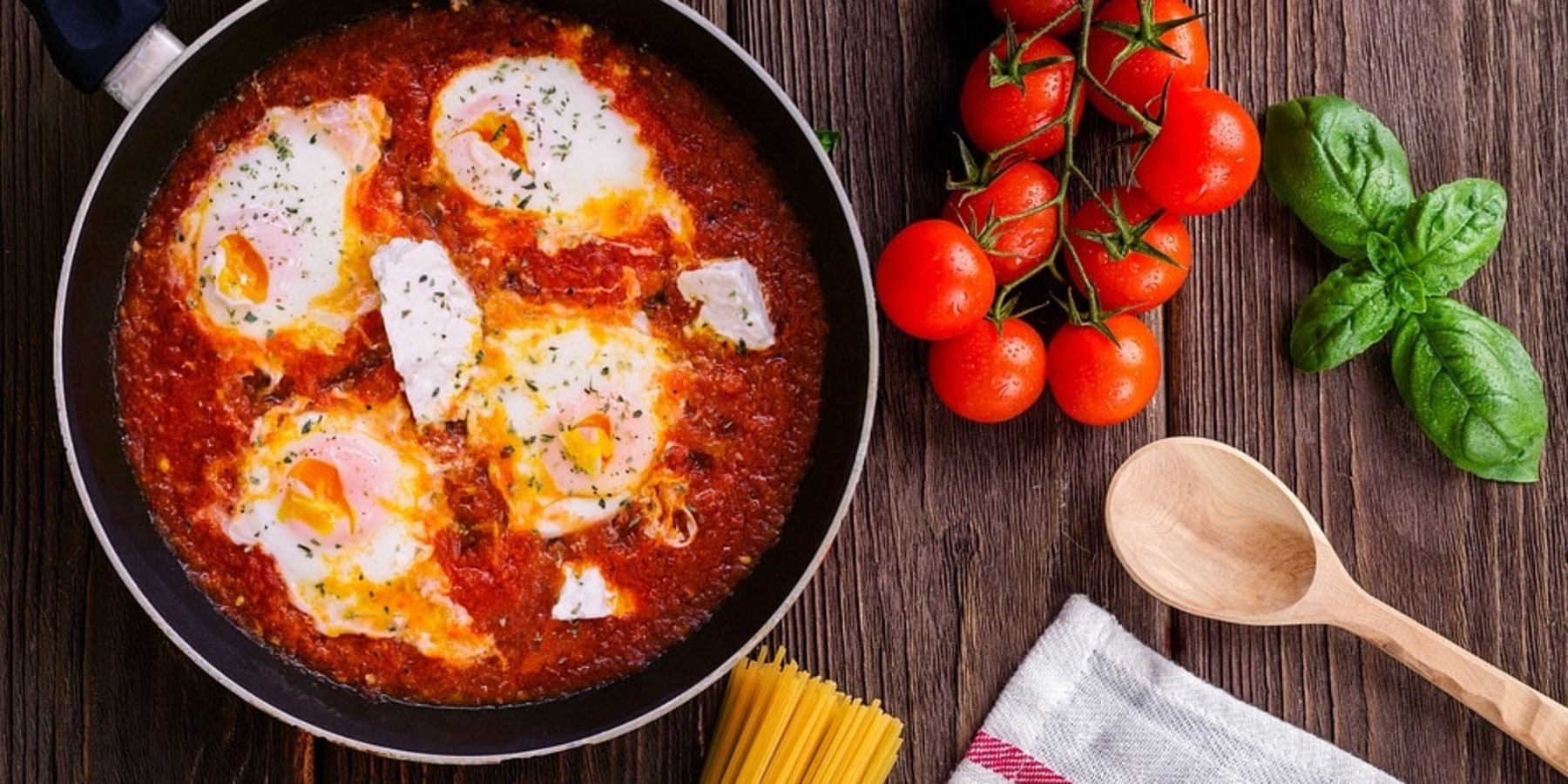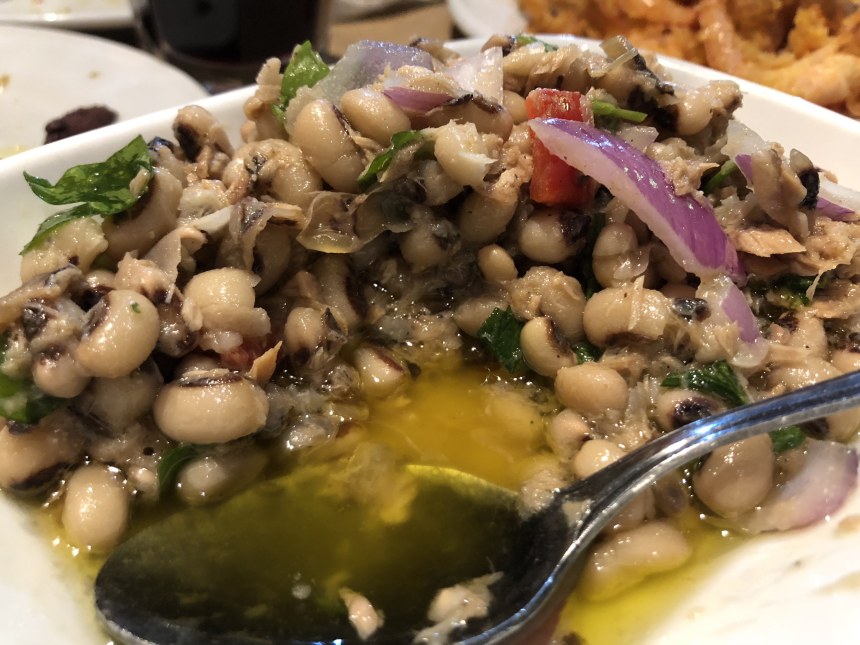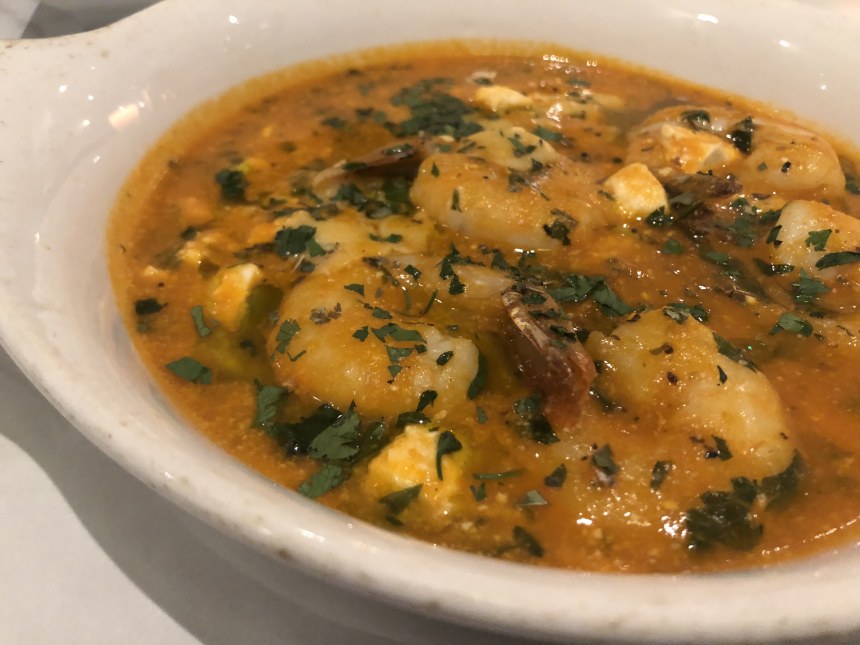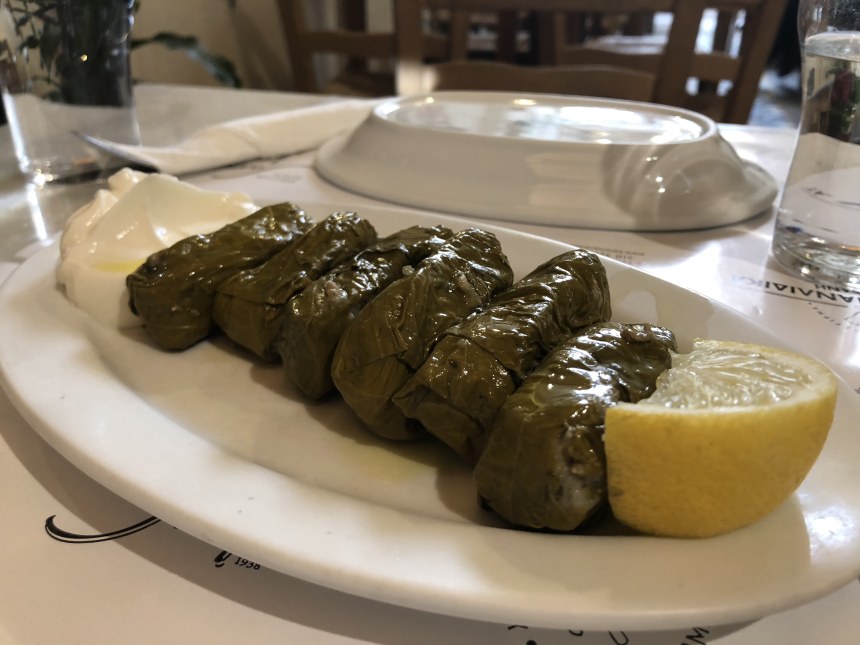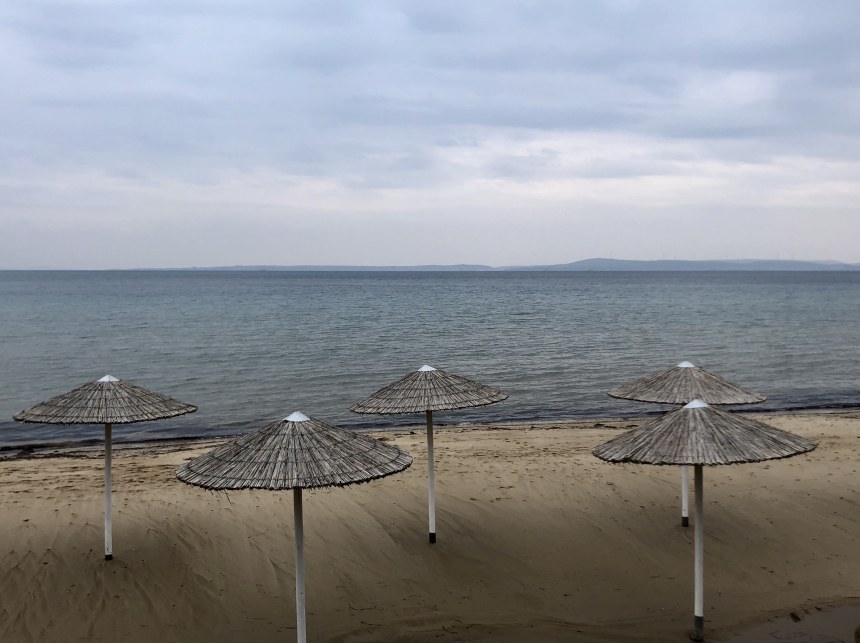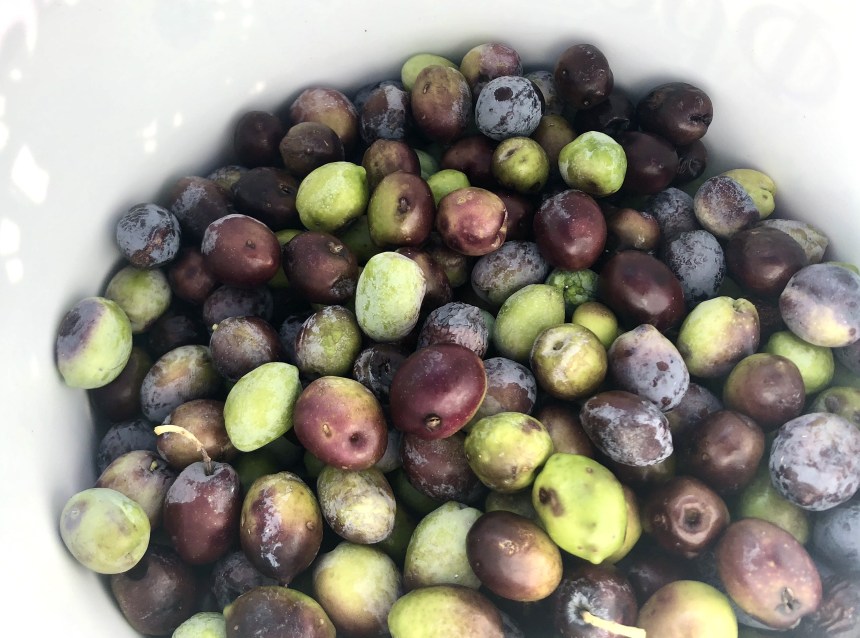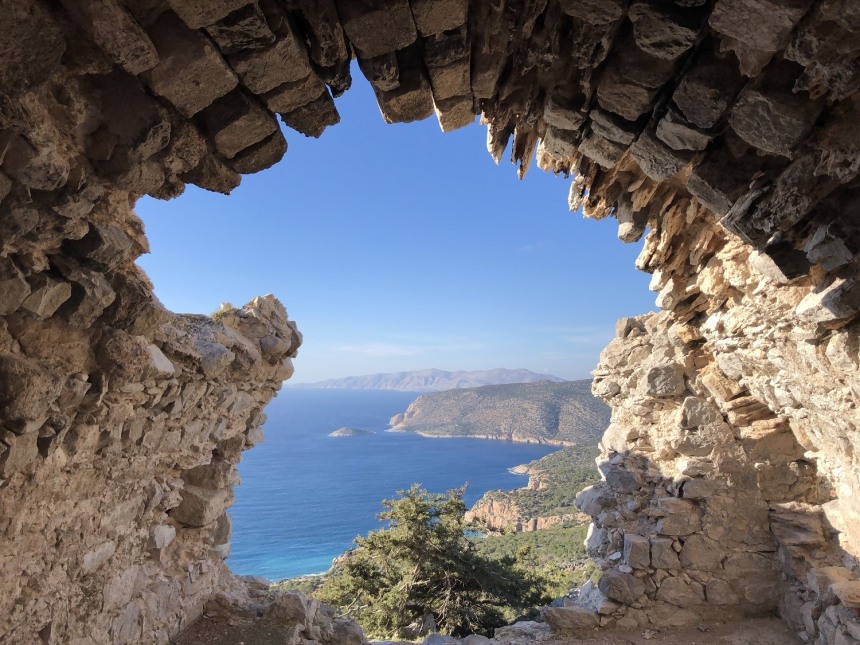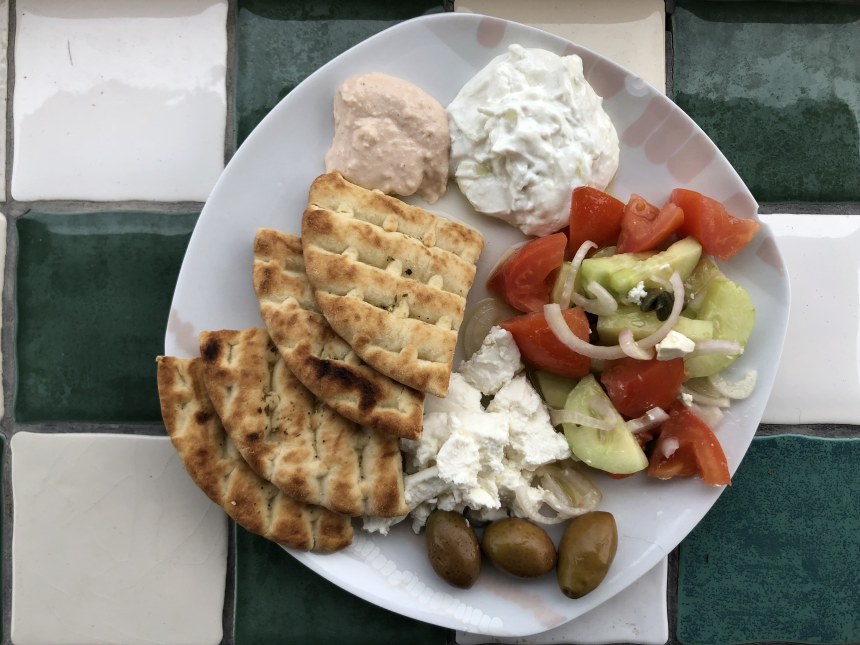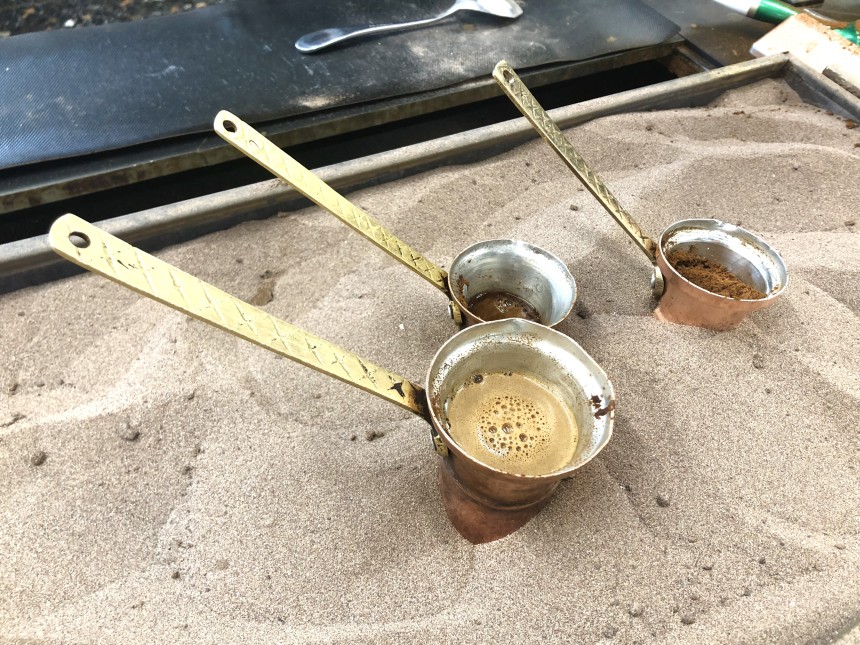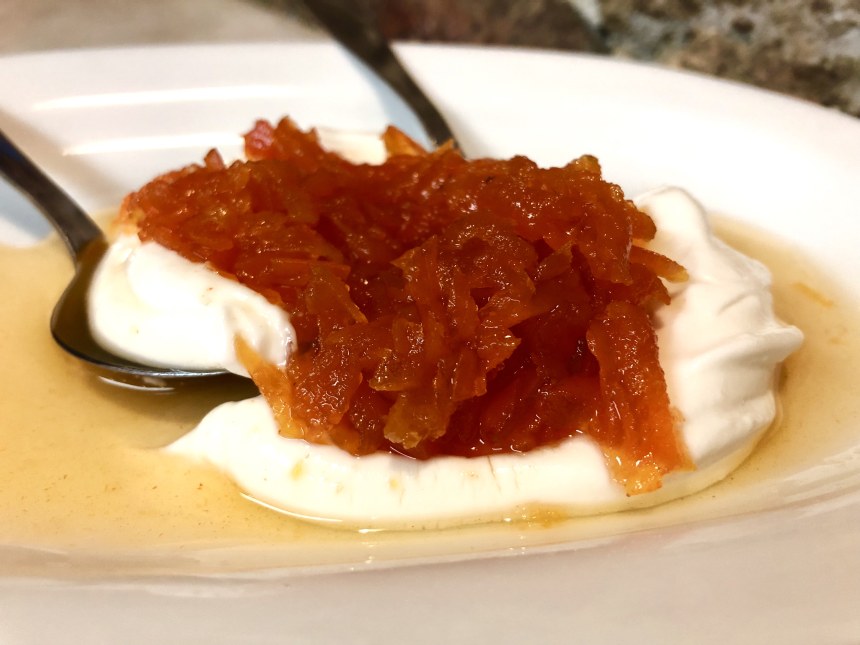| 13 mins read
Erin Skahan
Greece is a food lover’s paradise. In fact, the first cookbook is thought to have been written in Greece back in 350 BC. The country has been conquered through the centuries by various foreign empires, most notably by Germany, Italy and Turkey. For all of the ways in which war and subjugation can influence a culture, cuisine is perhaps one of the most interesting. While the roots of true Grecian food remain strong across the country as a whole, new spices and flavours have been introduced over the centuries, as islands and regions were individually overtaken, changing and further shaping what we know today as “Greek” food.
Dining out in Greece
Dining experiences in Greece are casual, social affairs. Many of the traditional tavernas are family owned, often over generations, and food is served family style, without a menu. For them, a meal is about breaking bread together, the original meaning of companionship. Typical dishes served in these trattorias are greek salad with fresh local feta, another salad of black-eyed peas with tuna, red peppers, red onions, and cilantro.
Seafood such as fried sardines, whole prawns, and boiled octopus are found on most traditional menus. Large dinners in these trattorias are of extraordinary value, especially considering the cultural dining experience they provide. For two people to have a big, family-style meal including wine and ouzo will range from €25-30.
There is a relaxed attitude that permeates Greek culture, inspiring socialisation to pass the time. Greeks will happily linger at the table for hours sometimes, and you will never feel rushed. Despite a 2010 ban on smoking, and no-smoking signs (almost humorously) posted everywhere, Greeks continue to be most dedicated smokers in Europe. This is helpful to know if you’re a non-smoker, so you can opt for an outside table, weather permitting.
Chios
My food exploration began on the Aegean island of Chios, only a short 16 km from Izmir, Turkey. I found a food tour guide to give me an introduction to the local flavours, and to provide some historical context. With a nod from my tour guide, the woman behind the counter went to work, dropping a hefty hand full of what looked like donut holes into a metal basket and submerging them into the hot bubbling oil. While I waited, my guide explained that these sweets were possibly the earliest recorded in history, dating back over 2,000 years. They are called loukoumades and are the ancient precursor to the Sicilian zeppole, eventually spreading throughout the Arab world in various incarnations, and leading us to the modern donut. Delicious and indulgent, this every-day breakfast treat only spiked my curiosity about the magical Mediterranean diet.
Our next stop was a little cafe that specialized in small plates. I’m served something that soon becomes my Greek comfort food: cheese pie, or tiropita. This is a traditional savoury breakfast or lunch option, filled with a combination of eggs, feta and anthotiro cheese, the latter being a fresh cheese that pairs well with the salty feta. Tiropita is actually more popular in Greece than spanakopita, arguably the food they are most internationally recognized for. Rather than a casserole style square, in Greece these are more often sold as triangular hand pies, good for eating on the go. Next came a few varieties of cured fish, including herring and mackerel, and local cheese, all good but very salty. Greek food relies heavily on salt due to a long trade history, the mineral being the most effective way of preserving food in the warm, humid climate. Finally, and perfectly on cue to neutralize my palate, the lemony rice stuffed grape leaves known as dolmadakia were served. These were bright and delicately enhanced with dill, parsley and mint. These are common throughout the Mediterranean and middle-east, all slightly different, but signifying the interconnected food culture between these regions of the world.
Ouzo is another staple of greek life. The clear anise-flavoured spirit turns cloudy when ice or water is added due to the insoluble properties of the extracted oil. Ouzo symbolises the end of a meal, and it’s sustainable to boot. Made from leftover grape skins and stems, all by-products of wine, it’s a brilliant way to make use of what would otherwise become waste. If the strong liquorice flavour doesn’t appeal to you, not to worry. You can find versions of ouzo that are infused with fruit, such as the ubiquitous Mediterranean orange, or mandarin, pomegranate, rose, even bergamot. There is also souma, which is not produced commercially. Only independent makers sell this spirit, clocking in at around 45% alcohol. Souma comes from figs, through a long process of drying on rooftops, followed by fermentation before the liquid is distilled.
Another important spirit, specific to Chios, comes from the eternally diverse tree sap called mastic. The mastic tree can grow in various parts of the Mediterranean, but only in the southern region of Chios does the tree produce this minty, yellowish sap the island is famous for. The substance has been so important to the economy that even during the 400-year Turkish occupation, the mastic villages were granted a certain level of autonomy compared to the rest of the island inhabitants. It was the first chewing gum, was used for candy, all kinds of health cures from ulcers to insect repellant, and of course, liqueur. It’s definitely worth having a local guide in Chios explain the complex history behind this unique substance, and how its rarity helped preserved something so special to the food culture of Chios island.
Karfas
A normally touristy resort area just south of Chios town, the village of Karfas offers plenty of deals in the off-season. The beach has a wide and long stretch of sand here and is relatively empty in the low season.
Taverna Pinaleon was recommended by my tour guide, and it did not disappoint. The special was an unusual dish of boiled octopus in red wine sauce which was something I returned for a few nights later. Another winner were the prawns baked in a spicy tomato sauce with big chunks of salty feta. We finished with the honey-sweetened classic baklava, layers of phyllo dough spread with chopped nuts, dripping with sweet warmed honey.
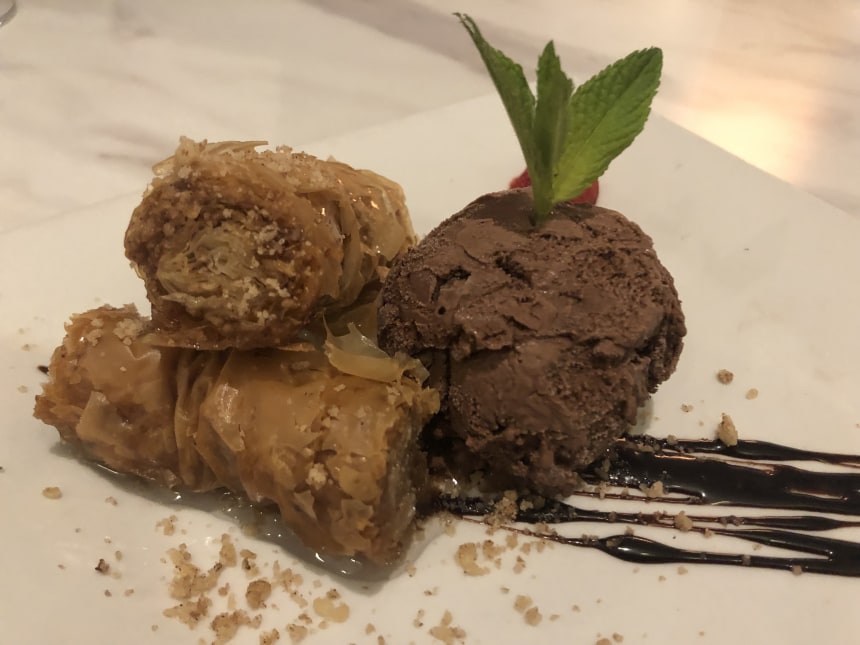
The Mastic Villages
Of the over 100 mastic villages that once existed in Chios, Pyrgi, Mesta, and Olympi are the best preserved, having been spared after a devastating earthquake in 1881. The villages are small, with original structures perfectly preserved due to the high and impenetrable walls built by the Genovese, prior to the Ottoman invasion. The most visually striking is the “painted village” of Pyrgi, where most buildings are covered in black and white geometric patterns called xysta. The black plaster tiles are painted white, and the designs are created by scraping the paint away, forming repeating patterns with more tiles. This is thought to be a design element influenced by the Genovese during their period of rule of the island.
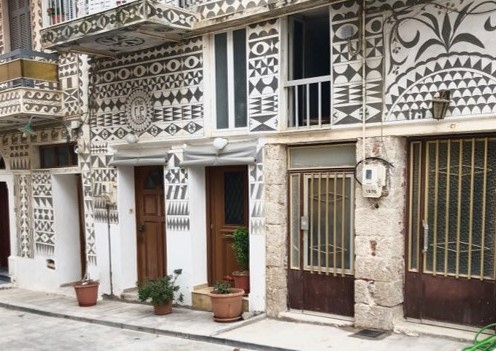
Lagada
The small fishing village of Lagada is off the radar of most tourists. On the recommendation of a tour guide, we sat down for a very early dinner at a restaurant called O Passas. Greeks eat late, so in our efforts to be conservative with our budget, we decided to have our main meal in the middle of the day. The genius of this idea lies in the fact that Greeks love to socialize. If you’re the only people in the restaurant, you can likely expect the owner or the Chef to pull up a chair for a chat. This was immediately the case at O Passas, a bright and tastefully decorated seafood restaurant overlooking the harbor. The owner told us about everything on the menu, their special way of preparing grilled octopus. We let them prepare whatever they thought we should try, perfectly concluding our time there.
Rhodes
The island of Rhodes is more developed for tourism, with huge all-inclusive resorts scattered along the coast. If you’re looking to discover a less manicured side to this island, you can avoid the tourism-driven beaches and head into the mountains. The main thing to see in the city of Rhodes is the old town, which is surrounded by a medieval fortress, one of the best preserved in the world. A stroll through the narrow, winding alleys is a must, along with a visit to the Palace of the Grand Master. A great traditional trattoria is Psarokokkalo, which means fishbone in Greek. The owner’s wife makes a family specialty dessert called ravani, a sweet coconut cake. One day in Rhodes is enough to explore these sights, and for some off the beaten track options, rent a car and head outside of the city. A day trip is a good way to explore the more upscale whitewashed village of Lindos, and it’s also worth your while to book a tour to visit an olive oil producer.
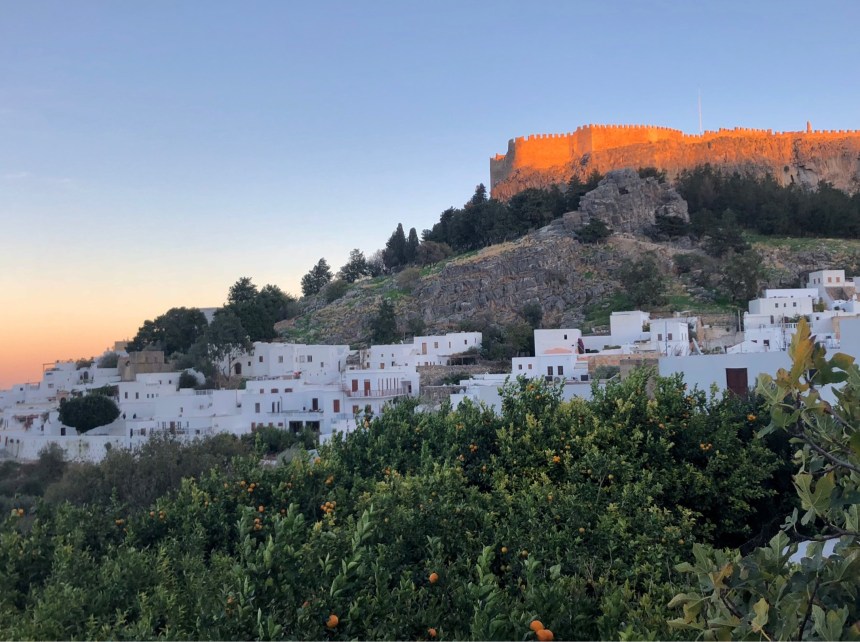
Monolithos is another small village you should see if you’re looking for some physical activity. On the top of the hill sits the small white Monolithos Castle, actually a small church built in 1480. This sits on a high point with unparalleled views of the sea below.
Hydra
The island of Hydra is an easy day trip from Athens, but a few days spent here can offer a quiet reprieve from the busy city. There are no cars permitted on the island. From the moment you come off the ferry, you see a hand full of donkey’s waiting, their handler’s offering rides up the mountain for tourists. It’s a relaxed place but can be very crowded in high season, so again it’s best to visit in the shoulder months. This is the place to really feel like you’re living inside of a postcard. There is a beautiful coastal walking trail that circles around the coast, which takes you through other smaller villages with quieter (and less expensive) restaurants. The best place for an authentic bite on the water is a restaurant called Piato, run by a very friendly women named Katerina. Her cat Aliki will keep you company while she makes you the best taramasalata in all of Greece.
This is a traditional dip made from blending fish roe, bread crumbs and lemon juice. Her’s is light and has more of a whipped consistency, making it unique. Bring a book and a sun hat, and sip wine by the harbor as the sun goes down.
Athens
Last but certainly not least, the big city of Athens. People tend to have mixed reviews about this historic city, which is why it was an easy decision to have an experienced tour guide help me find all of the right places. Kuluri is the most traditional Athenian breakfast option, which is like a large circular pretzel. The most interesting coffee experience in the city is to be had at Mokka. The method here is a blending of Greek and Turkish coffee culture, starting with a large metal bin full of hot sand. A copper coffee pot is placed in the sand, with finely ground coffee and water. Then you simply watch and wait. When the crema form on the top, it’s ready. This is then poured into a cup, and served with a sweet, thick cherry spoon sweet.
For lunch with a local feel, head to Ta Karamanlidika tou Fani, a long-time local favourite. The greek yogurt with candied carrot syrup is a must, and the deli counter allows you to sample local meats and cheeses before buying them.
This place is a true bite of Athens. At least 4 hours should be dedicated to visiting the Acropolis Museum and finishing with a long walk down the garden path below takes you towards the old part of the city, reminiscent of the colourful coastal villages. Athens is also the perfect place to experience traditional rebetiko, a once popular Greek folk music. This genre is having a resurgence in popularity, and music tours are a great way to to find the real thing in the many live venues throughout the city.
The famed Mediterranean diet seems to be more of a way of life than it is about food. Staying involved in the social fabric of the community is an important facet of Greek life, clear from the long hours spent at the dinner table, laughing, sharing food, and sharing ouzo. Meat tends to be more of a supporting food item, whereas vegetables play more of a leading role. Not only the food, but also the laughter, dancing and opportunities to be among friends and family make the Greek lifestyle healthy. A visit to Greece feels like a true escape, and a reminder of the joys of life.
"Erin is an experienced solo traveler, interested in how food shapes culture. She cooks and writes her way through cities and villages, primarily focusing on Western Europe."
Image details and licenses:
{Photos of Tuna and black-eyed pea salad with peppers and onions
Quiet beach in Karfas
Typical Greek plate: feta, tomato salad, pita, olives, tzatziki and taramasalata
Freshly picked olives
Mastic village of Pyrgi
View from Monolithos Castle
White washed village of Lindos
Greek yogurt with candied orange
Greek coffee made in hot sand
Dolmadakia, rice stuffed grape leaves
Prawns in spicy tomato sauce with feta
Baklava by Erin Skahan; all rights reserved.}

